

Bailey House
The Bailey House or Case Study House #21 was registered as a Los Angeles Historic-Cultural Monument #669, with the endorsement of then owner Michael LaFetra, the Los Angeles Conservancy and Pierre and Gloria Koenig.
The Case Study House Program
In January 1945 John Entenza, the editor and publisher of Arts & Architecture magazine, announced the Case Study House Program (CSHP). The program was envisioned as a creative response to the impending building boom expected to follow the housing shortages of the Great Depression and World War II. Entenza encouraged participating architects to use donated materials from industry and manufacturers to create low-cost, modern housing prototypes that might foster a dialogue between architectural professionals and laymen.
The highly publicized program ran from 1945 to 1964, spanning thirty-six individual designs, many of which were never constructed. The initial program announcement stated that "each house must be capable of duplication and in no sense be an individual performance" and that "the overall program will be general enough to be of practical assistance to the average American in search of a home in which he can afford to live."
After returning from four years of fighting in WWII, Pierre Koenig was introduced to the CSHP through the ongoing publication of the avant-garde designs in Arts & Architecture magazine. By 1948 Koenig's interest in modern architecture led him to transfer from Pasadena City College to the School of Architecture at the University of Southern California where he studied under Richard Neutra and Gregory Ain. In 1950, while enrolled at USC, Koenig designed and built his first steel-framed house for himself and his family.
Koenig's first involvement with the Case Study House Program occurred while working in the office of Raphael Soriano on the Case Study House 1950 project. In 1956 he worked briefly with Archibald Quincy Jones on a steel house in San Mateo, California for the prominent property developer Joseph Eichler. Eichler and John Entenza were well acquainted and both were developing a keen interest in the potential of lightweight steel construction for residential architecture.
Koenig's hands-on experience with steel construction and his mastery of the new arc welding process on the San Mateo house would prove influential for the rest of his architectural career. Entenza saw great potential in Koenig's design work of the time and offered him a tentative invitation to participate in the CSHP when he "found the right house and the right client." This period marked the beginning of what historian Esther McCoy would later identify as the second phase of the Case Study House Program, represented by "a concerted effort... to bring architecture into relationship with the machine."
The Bailey Commission
In early 1957 psychologist Walter Bailey and his wife Mary commissioned Pierre Koenig to design a 1,200-1,300 square foot house upon a level site nestled within a Hollywood Hills canyon. The Bailey's were later described in Arts & Architecture magazine as a "contemporary-minded" couple with no children and an informal lifestyle. This represented the ideal program for Koenig to realize steel framings potential to achieve a truly open plan design that capitalized upon the vast spans that steel facilitated.
By May 1958 Koenig had completed his construction drawings and begun collaboration with factories that were capable of producing the prefabricated steel bents. The bulk of construction took place from August to November of the same year, and by January 1959 the house was officially completed.
Publication
In February 1959 Case Study House #21 was published in Arts & Architecture and was lauded as "some of the cleanest and most immaculate thinking in the development of the small contemporary house." As was standard for all CSHP participants, the house was opened to the public for several weeks of viewing.
A year later in 1960, a photographer named Julius Shulman (himself a Case Study client) was invited to photograph the Bailey House. The photographs he took would later become iconic symbols of California Modernism. As one article for L'Uomo Vogue described, Shulman's architectural photographs of Case Study House #21 and #22 have "an enduring resonance and iconic power. Taken on the eve of America's involvement in Vietnam they record the last glorious moments of American post-war hegemony and self-confidence and its unquestioned belief in the benefits of progress and technology."
Nearly thirty years later in 1989 Shulman's photographs of the Case Study Houses were exhibited at the Los Angeles Museum of Contemporary Art in an exhibit entitled "Blueprints for Modern Living" which would ignite a "groundswell of interest in Modernism" and renewed appreciation for Koenig's contribution to the California Modern movement, which had been largely forgotten during the 1970s and '80s.
Significant alterations
About 1969 Dr. and Mrs. Bailey relocated to the East Coast for professional reasons and put Case Study House #21 up for sale. Sadly, over the next thirty years a succession of owners exhibited "weaker commitments to maintenance and preservation" then the Baileys had demonstrated. Numerous ad-hoc renovations wreaked havoc upon the original design. Among these were the installation of several skylights and a fireplace.
In the 1980s Koenig's original kitchen was demolished and was replaced with a center-island cooking station. The slab-like white-vinyl-tiled floors that Koenig originally specified were replaced with wide-grout ceramic tiles. Years later Koenig would describe his impressions of the altered house by stating: "even though I knew what had been going on in this house it was a great shock to see it. My houses are like children to me."
In 1997 an admirer of Julius Shulman's photography, film producer Dan Cracchiolo expressed interest in the Bailey House after seeing some of Shulman's photographs. He made an offer on the property of $1.5 million. The offer was accepted and Cracchiolo immediately commissioned Pierre Koenig to assist with 'resuscitating' the original design.
The meticulous restoration that followed would last for over a year, nearly twice the duration of the original construction. In recalling the process Koenig later described the difficulty of "finding the parts." The mosaic tile that covered the walls of the interior courtyard proved particularly challenging. Restoring the essence of the original kitchen with state-of-the-art appliances also prove difficult. The wall-hung refrigerator of the original design was no longer in production by General Electric so Koenig modified three under-counter Sub-Zero Refrigerators by inverting the motor locations to conform to the plan. Koenig also retrofitted the house with state-of-the-art mechanical and lighting elements including an updated water heater and furnace housed in the utility core. When the process was nearly complete Koenig reflected on the restoration acknowledging "a weird sense of deja vu in working on the same building forty years after I built it the first time" but confessing "a wonderful feeling about getting it right, again."
Cracchiolo was not content with a purely architectural restoration and pursued reinstatement of the original furnishings as well. To replace the long-discontinued Formica entry cabinet shown in the famous Julius Schulman photograph, Cracchiolo commissioned Jerry McCabe, the original manufacturer, to repeat the design. Likewise, a black Naugahyde sofa was commissioned to the exact specifications of the original.
In a July 1999 Architectural Digest article describing the restoration process Cracchiolo acknowledged feeling "an edgy ambivalence between wanting, on the one hand, to restore Case Study #21 to its original condition of fifties 'purity' and, on the other to allow more expression of his own nineties needs and tastes." One example he describes is his desire to display books rather than leaving the walls as pure and bare as the original Shulman photographs depict. In 2001 Pierre Koenig received the City of Los Angeles historic Preservation 2000 Award of excellence for his beautiful restoration of the Bailey House.
Shortly after publication of the Architectural Digest article a film producer named Michael LaFetra who had been looking for modern architecture properties came across the article and resolved to purchase the property. It came on the market shortly after and LaFetra's offer was accepted. Within a week of the purchase LaFetra received a phone message from Pierre Koenig stating: "Hello, this is Pierre, your architect, and I want to talk." Soon after LaFetra was told by Koenig that "he ought not to have to change anything in the house but, if he needed to, he should get in touch with him."
Soon after a friendship began and by 2000 LaFetra had commissioned Koenig to design a new home for him on a beachfront lot in Malibu. After ensuring protection for Case Study House #21 by registering it as a Los Angeles Historic-Cultural Monument, the house was put on the market in 2002 to pay for the new construction. With Koenig's permission LaFetra began work on a documentary to cover the design and construction process, but sadly in 2004 Koenig succumbed to leukemia and died April 4 of that year.
Current condition
In July 2006 Julius Shulman (at age 95) was invited to revisit Case Study House #21 to photograph it in its modern condition for the catalog of an upcoming auction at Wright 20. On December 3, 2006 the property sold for $3,185,600 to a female art collector from South Korea. This sale represented the second highest price of a Modern house at auction, just behind Mies van der Rohe's Farnsworth House, which sold for $8 million. Reports of the sale describe it as a "watershed moment" in the public acceptance of Modernism as art, rather than real estate.
Shulman's latest photographs offer a unique glimpse into the precision of Koenig's restoration. Although Koenig's completed house is nearly exact to the original design, subtle changes are present. Among these are a slightly altered tiling layout for the inner courtyard wall and a more elaborate fountain mechanism below. The can-like lights that are present throughout the space appear to have a darkened patina applied as compared to the original lacquered fixtures. Additionally, Cracchiolo apparently requested the introduction of semi-translucent glass on the bathroom walls for increased privacy.
Description
In describing his concept for Case Study House #21, Koenig stated "I was trying to develop" 1,300 square feet (120 m2) "in an efficient, social, and exciting plan that people could afford... I had thrown out all conventional thought because I had no patience with anything that had been done before." The Case Study program called for the design of mass-producible prototypes and Koenig appears to have accomplished this while adequately addressing site-specific factors.
CSH #21 is arranged along a North-South axis with a carport on the North side and a fully glazed South side to take advantage of the best view and maximum sunlight for winter months. Koenig opted for a compressed 'L' shaped plan to establish a linear progression from the carport and entry through the living space and out to the garden. This compression is achieved by opaque, steel decking walls blocking the unattractive views towards the "scrubby hillside" on the West and Wonderland Park Avenue on the East.
The main house is a 30' x 44' rectangular plan with a solid rectangular core housing the utilities - two full bathrooms and a mechanical room. Beyond this core lay two efficiently arranged bedrooms. The threshold through this interior courtyard/core provides increased privacy (visually and acoustically) for the bedrooms. By designing a central service core Koenig simplified the language of the perimeter condition to either standard sized sliding glass doors or opaque steel walls. The simplicity of the material vocabulary is what John Entenza found most appealing. When first visiting the house he described it as "a very pristine, clean design. Two details, one north-south, one east-west. One material for the roof, same one for the walls. Minimal house, maximum space."
The steel framing system of the house is composed of four prefabricated steel bents 44' wide x 9' high, forming the interior of the house. In addition, three half-span bents are used to frame the covered carport. It is interesting to note that Koenig specified identical structure to the houses he worked on with Soriano and Jones - 8" I-section beams and 4" H-section columns. Rather than use a standardized 8' dimension, Koenig opted for a 10' spacing between bents for economy and to streamline the overall structure. Koenig frequently stated, "Steel is only as good as it's detailing. In order to make exposed steel acceptable in the living room it must be so well detailed that the joining connections are imperceptible."
Indicative of the changing context, the property is now surrounded by tall trees and shrubbery, replacing what was once a grand view to the south. This is clearly an adaptation to achieve greater privacy within the now densely populated Hollywood Hills canyon. As an article in House Beautiful magazine described, today "the building's defiant simplicity stands in stark contrast to the fussy over-scaled residences that sit high on the hills behind it."
The rigidity of the steel framing provided inordinate lateral stability in the East-West direction and the welding of channels to the top and base of each columns provided additional strength in the North-South direction for sufficient resistance to seismic forces and wind loads. These elements unify the building aesthetically and structurally.
Koenig made use of the sandwiched steel decking walls to conceal insulation, wiring and pipes. By piercing the roof over the bathroom and utility core, Koenig effectively penetrates the very core of the house with the exterior components of light, water, and plants. This provides an acoustical buffer between living and sleeping areas and underscores the airy, natural feel of the house.
The furnace housed in this utility core supplies heat to the main space through heating ducts, which are arranged along the base of the glass walls for maximum efficiency. During the winter the lack of overhangs provides maximum passive heat gain, and the installation of the original Koolshade panels in the summer was meant to minimize excessive heat gain in the summer.
The circulation of pond water up to the gutters and its descent back through the roof scuppers represents a remarkably early experimentation with environmental control systems. As James Steele described in his monograph of Pierre Koenig, "the strategy is both pragmatic and lyrical; the water has some cooling properties and the hard building edge at the ground level is softened by the reflective surface." Additionally, this circulation eliminates the need for chemical treatment of the water.
Although architects of the second phase of the Case Study House Program never gave up their belief in the potential of steel framing for residential construction, the public never embraced the material. As Elizabeth A.T. Smith explained: "Unfortunately, the economic pressures of the era were pushing residential construction another way, to accommodate the merchant builders working to deskill building tradesman and architects, and to glorify the add-ons and fix-ups of Mr. Homeowner and Mrs. Consumer, the stock characters of American advertising lobbying of the 1920s and 30s." Although they imagined factory-based industrial materials could be more economical then traditional wood framing, this was never realized. As such steel-framing faced social and economical obstacles. In the end, the Levittown paradigm would dominate America's mass housing strategy in the post war era.
Cultural and aesthetic
By painting the walls and ceiling white and maintaining the factory-applied charcoal Perma-Bar sealer coating on the steel, Koenig created visual emphasis on the structural skeleton. By expressing the volume as a simple box without overhangs Koenig underscored the simplicity of the rectangular forms. The entire composition whispers of understated elegance.
The fully glazed North and South walls blur the interior and exterior - a common goal of the Case Study Houses. Describing the aesthetic goals of the movement Koenig would later explain: "We moved garages to the front and living rooms to the back to put them closer to the yard... We used steel, which in addition to being economical gave us a different living environment. It opened up the plan, letting us use more glass to create more light, which helped heighten the relationship of the interior to the exterior."
Koenig's inclusion of the ponds around the perimeter of the house allows the structure to read as if it is floating. As Elizabeth A.T. Smith described in Blueprints for Modern Living, "reflections of trees and sky intermingled on the water's surface with the pure lines of the house's contour...humanized through the merging of the technological with the natural."
Although CSH #22 is more recognizable, CSH#21 is arguably the finest example of Pierre Koenig's steel-framed houses. It is widely considered to represent the highest point of the Case Study House Program's success. As Neil Jackson stated in his monograph of Koenig, "The Bailey House represents the ultimate refinement of an ideal developed by Koenig in his early houses and built upon through his experience with Soriano and Quincy Jones. It was the simplest of solutions achieved in, apparently, the most effortless way and was a remarkable achievement for such a young man."
David Hay aptly summed up the importance of CSH #21 - both then and now - when he wrote: "Back then, Case Study House 21 was a brilliant response to the design spirit prevalent in Los Angeles - "be modern, be decisive." Now in its restored state, it is a powerful reminder of a time in southern California when architecture insisted on invention."

All our texts and many of our images appear under the Creative Commons Attribution Share-Alike License ( CC BY-SA ). All our content is written and edited by our community.

Eames House

Schindler House

Case Study House No 18 B
- Random Project
- Collaborate
Bailey House / CSH Nº21
Introduction, orientation.

Did you find this article useful?
Really sorry to hear that...
Help us improve. How can we make this article better?
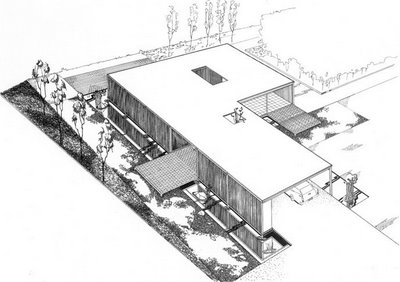
Case Study House 21. Pierre Koenig
Within the Case Study House Program , the #21 represents an experiment that the architect Pierre Koenig conceived following -and sometimes inventing- the principles of the mid-century modern architecture like the on-site assembling of prefabricated elements.
The Case Study House #21 is located in a Hollywood Hills canyon and its structure is made of glass walls surmounted by a ribbed steel ceiling -instead of the traditional overhanging one- that protects from the Californian heat. For an optimized sun control, cooling-shades are used in the southern part of the house and over the opening in the central patio. This also provided a feeling of privacy.
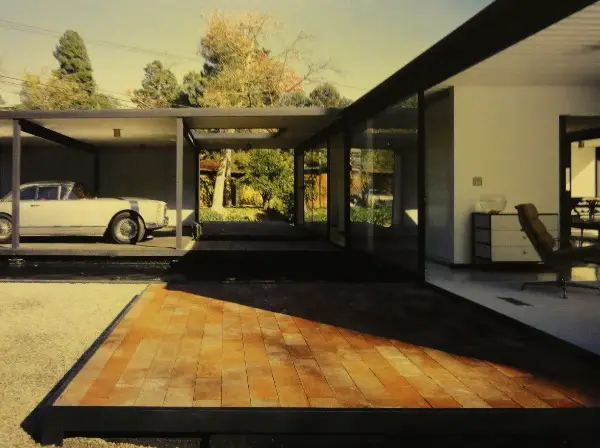
The exposed roof gives a dramatic effect to the house profile; as the photographer Julius Schulman pictured in the famous pictures you can see in this post.
Like Richard Neutra did with The Josef von Sternberg House, Koenig also considered water as a fundamental element of the project. The water is hydraulically pumped to the roof from the pool surrounding the house to fall back again in the pool below, creating an incredible fountain-effect and contributing to the iconic look of the Case Study House #21.
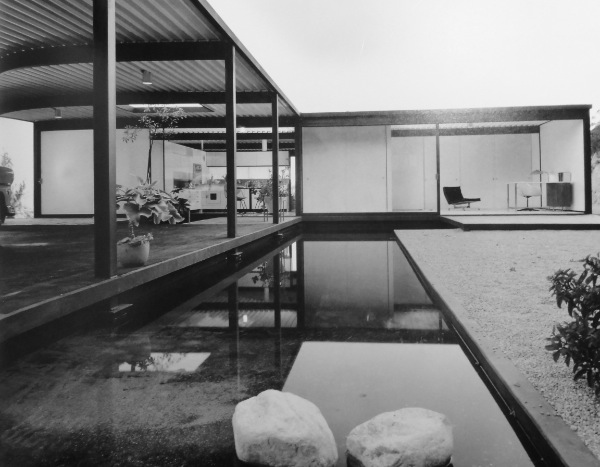
The water has a decorative function because it reflects and amplifies the house profiles but it also helps in creating a peaceful atmosphere too. This was definitely a revolutionary concept back then.
The two bathrooms and the water heating system are located in the heart of the house , communicating with the patio.
Koenig used this area to divide the public spaces from the private ones while making the baths accessible from all the rooms. The solution allows the light to get in the living area and kitchen even when they are far from the big floor-to-ceiling windows.
The Case Study House #21 represents, within all the steel houses projects, the acme in architectural planning and developing; its plan and execution are heretofore considered experimental . The careful use of prefabricated steel elements made this project luxurious without being expensive.
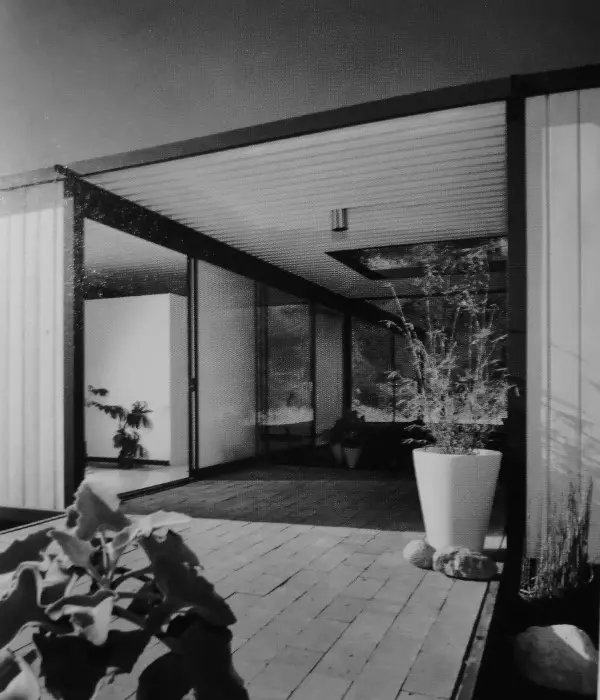
The water and the steel structure constitute the theme of the house, enriched with the brick terraces that add another texture. Spanning the pool, the terraces provide direct access to the living area while, to provide a continuity of theme, a pool is located in the internal patio where the water falls on a mosaic tiled wall.

Koenig particularly cared to link the different areas of the house : public spaces, patio, bathrooms and bedrooms. It is possible to access to baths thorough either the bedrooms or the court, directly accessible from the bedrooms and the living room; also the bedrooms are communicating with each other by a passage near to the storage wall closed by a sliding door.
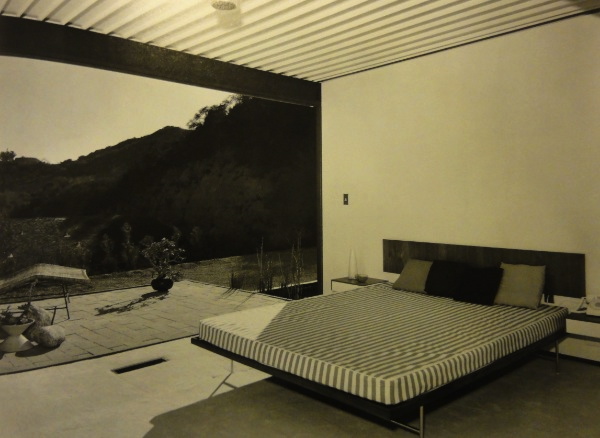
Photos by Case Study Houses.
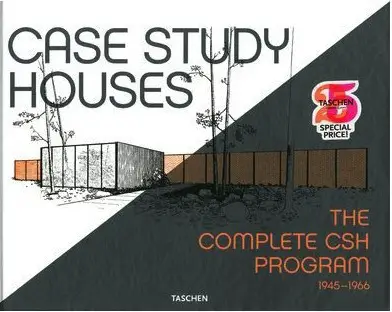
The Case Study Houses Program: Richard Neutra’s Bailey House
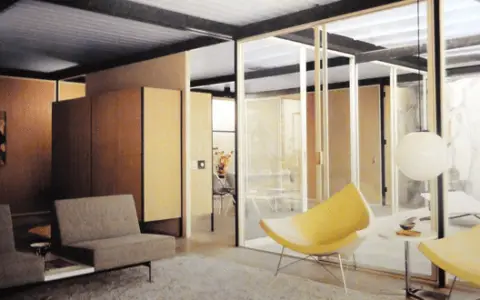
The Case Study Houses Program: Craig Ellwood’s Case Study House 18
Search the Site
Popular pages.
- Historic Places of Los Angeles
- Important Issues
- Events Calendar
Bailey House (Case Study House #21)
A part of the innovative Case Study House Program, this home, built in the Mid-Century Modern architectural style, was meticulously restored, preserving a beautiful and rare example of steel-frame residential architecture.
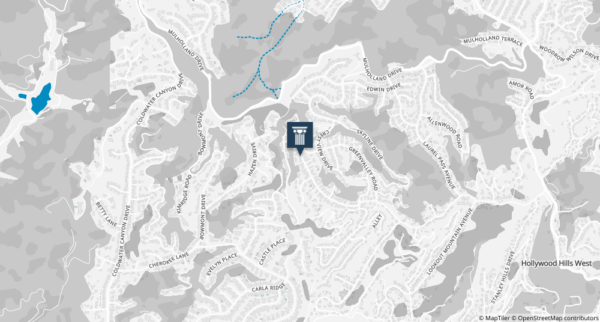
Place Details
- Pierre Koenig
Designation
- Locally Designated
Property Type
- Single-Family Residential
- Private Residence - Do Not Disturb
- Los Angeles
Renowned architect Pierre Koenig is famed for his steel-framed houses, most famously the Stahl House (Case Study House #22), which overlooks all of Los Angeles from the Hollywood Hills. Less well known but no less admired is Koenig’s earlier Bailey House (Case Study House #21), which is tucked into those same Hollywood Hills on a small, nondescript lot.
He designed it for psychologist Walter Bailey and his wife Mary, a contemporary-minded couple who wanted a small house in the Mid-Century Modern style. Unlike many other homeowners, the Baileys were open to the idea of a steel-framed house, and Koenig was able to realize his vision of an open-plan design that was both affordable and beautiful. Completed in 1959, the Bailey House was envisioned as a prototype for modern housing that could be produced on a large scale, perfectly in keeping with the goals of Arts + Architecture magazine’s Case Study House program. It is a simple one-story box with a flat roof, built mainly of steel and glass.
Koenig oriented it on a north/south axis to trap the sun’s warmth in the winter and screen it out in the summer. This adaptation, along with others like sliding doors for cross-ventilation and shallow reflective pools for evaporative cooling, ensured the building would be in harmony with its climate. An opaque side façade and a carport protect the house from the street, allowing the front and back façades to be floor-to-ceiling glass for a true merging of the indoors and outdoors. The overall design is extremely clean, elegant, and peaceful, a success visually and functionally.
In the 1990s, Koenig reversed several inappropriate modifications to the house’s interior in a rehabilitation campaign that took twice as long as the original construction. The latest project, completed in 2023, consisted of a structural retrofit to stabilize the building foundation and a comprehensive rehabilitation with restoration elements. As part of the preservation philosophy, historical documentation, including historic Julius Shulman photographs and the original Koenig drawings, were referenced to maintain the architect’s vision for the design of the house while also improving living conditions for contemporary use. While the project required substantial removal and salvage of some features, exposing the original building to its structural grid frame, it was returned to its original appearance through careful restoration.
As a result, Case Study House #21 survives as a beautiful and sadly rare example of steel-framed residential architecture in a graceful Mid-Century Modern style.
2024 Preservation Award Project Team
Owner/Restoration Architect/Landscape Designer: Mark Haddawy Inc.
Contractor: BTC Builders, Inc.
Construction Manager: Ward Taylor
Architect for Plan Set: Corsini Stark Architects
Structural Engineer: Labib Funk + Associates
Historic Preservation Consultant: Chattel, Inc.
Historical Hardware Consultant: Architectural Detail
Structural Concrete Consultant: Donald J. Scheffler Construction
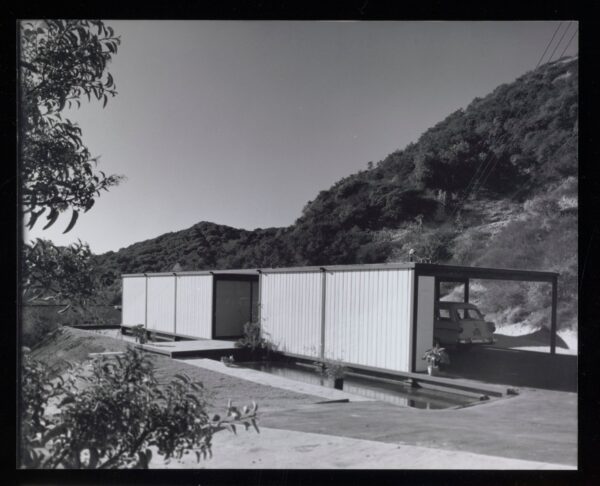
ANNOUNCEMENT
Meet the 2024 Preservation Award Winners
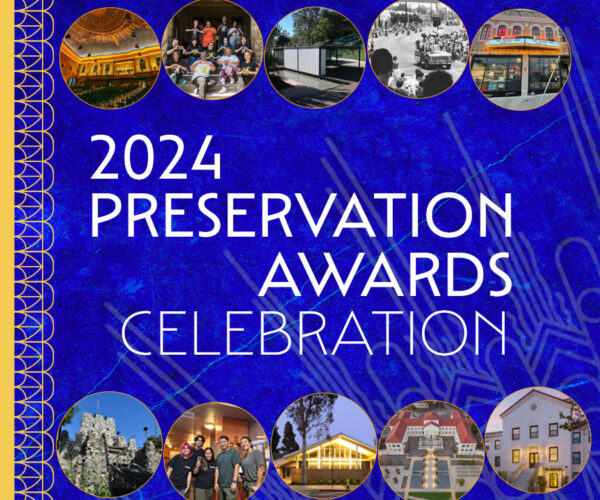
2024 Preservation Awards Celebration on May 16th
Cookie banner
We use cookies and other tracking technologies to improve your browsing experience on our site, show personalized content and targeted ads, analyze site traffic, and understand where our audiences come from. To learn more or opt-out, read our Cookie Policy . Please also read our Privacy Notice and Terms of Use , which became effective December 20, 2019.
By choosing I Accept , you consent to our use of cookies and other tracking technologies.
Site search
- Los Angeles
- San Francisco
- Archive.curbed.com
- For Sale in LA
- For Rent in LA
- Curbed Comparisons
- Neighborhoods
- Real Estate Market Reports
- Rental Market Reports
- Homelessness
- Development News
- Transportation
- Architecture
Filed under:
- Laurel Canyon
- Historic Landmarks
- Midcentury Modern
Thorough restoration—not demolition—underway on Case Study House No. 21
One of the most important homes in Los Angeles was starting to slip downhill
/cdn.vox-cdn.com/uploads/chorus_image/image/64791894/Case_Study_21.0.jpg)
Built between 1956 and 1958, Case Study House No. 21, also known as the Bailey House , features walls of glass, reflecting pools, and sliding doors. The boxy residence was designed by Stahl House architect Pierre Koenig and, seen from the street, the landmarked dwelling resembles a quintessential midcentury modern home.
But it was one of a just a handful of houses in the influential program orchestrated by Arts & Architecture magazine . So when neighbors and onlookers noticed drastic work underway on the site in Laurel Canyon , they feared for the future of the iconic home.
“Drove by the Bailey House and only found her bones,” one Instagram user who photographed the construction site posted on Monday.
Far from being harmed, the house is actually being rescued, says designer Mark Haddaway . He was hired by the new owner—a trust linked to Alison Sarofim, a film producer and daughter of billionaire Fayez Sarofim—who purchased the property in February for $3.26 million.
Case Study Houses were meant to be inexpensive, reproducible homes for the middle class—a solution to the postwar housing shortage. The Bailey House was built out of prefabricated steel and topped by a corrugated metal roof.
View this post on Instagram Bailey House - Case Study House #21 | Pierre Koenig, 1959 Drove by the Bailey House and only found her bones. So sad. I can't find anything about this online but since the steel frame remains, I hope that means it will be renovated as per the original. . . . . #casestudyhouse #casestudyhouse21 #pierrekoenig #california #californiamodern #midcenturymodern #baileyhouse #LAarchitecture #losangeles #modernarchitecture #architecturephotography #archilovers #steelframe A post shared by Vanessa Guillen (@vassilisag) on Jul 21, 2019 at 10:04am PDT
But as Haddaway told the the city’s cultural heritage commission in June, “because the budget for the project was small, the foundations for the house were minimal.”
Those foundations are now an issue.
Haddaway said that when contractors lifted up the concrete slab over the living room floor, they found an 18-inch gap between the ground and where the room’s floor had hovered. The soil had subsided, sliding out under the rest of the foundation.
In other words, it appeared Case Study House No. 21 was starting to slip downhill.
:no_upscale()/cdn.vox-cdn.com/uploads/chorus_asset/file/13251095/gri_2004_r_10_b199_2622_52ek.jpg)
The solution Haddaway’s team has come up with involves inserting a grid of “helical anchors” under the living room with the goal of stabilizing the house and preventing any further slippage. In some places, Haddaway says, the house has moved two inches off its original elevation. The anchors wouldn’t undo that, but they would halt any new movement.
In a phone interview, Haddaway says the improvements are needed to ensure the home’s survival for decades to come.
In addition to the foundation work, Haddaway also plans to restore the original yellow kitchen (the one in the house now is from 1997), reform and waterproof the pools that make up the original water features, and replace the original white vinyl tile with white terrazzo—a switch that would leave the door open for a future owner to put the vinyl tiles back in if they wanted to, Haddaway told commissioners.
Speaking at the June meeting, Lambert Giessinger of the city’s office of historic resources, told the commissioners that the project had initially sparked concern in the community because work had begun on the removal of the 1990s-era kitchen—before the city had been given a chance to weigh in. Now, however, the two groups are working together, Giessinger said.
Haddaway has worked on the house before and was, for a time, its owner. He has restored a number of other midcentury homes and is also working now on John Lautner’s Elrod House in Palm Springs.
Next Up In Historic Landmarks
- 1930s Spanish Colonial Revival on century-old citrus orchard asking $1.15M
- To save potential landmarks, LA wants more notice of demolitions
- Western novelist’s former Altadena estate for sale $4M
- Architect John Parkinson’s Santa Monica home on the market for $20M
- Cliff-hugging castle overlooking the sea can be yours for $27M
- Craftsman bungalow with incredible woodwork in Riverside asking $1.2M
Loading comments...
Share this story.
LAist is part of Southern California Public Radio, a member-supported public media network.

This archival content was written, edited, and published prior to LAist's acquisition by its current owner, Southern California Public Radio ("SCPR"). Content, such as language choice and subject matter, in archival articles therefore may not align with SCPR's current editorial standards. To learn more about those standards and why we make this distinction, please click here .
A Look Inside The Historic Case Study House #21
One of the Case Study Houses just went on the market, as we noted earlier this week , and today we took the opportunity to step inside the historic home at the open house. Click through for photos of what this circa-1950s house looks like today.
The Case Study Houses were built through an Arts & Architecture project that lasted from 1945 to 1966. Almost all of the homes were built in Los Angeles, and only around twenty remain today, so it's not often that you'll find one on the market. This one is the Bailey House, or Case Study House #21 ( PDF ), located at 9038 Wonderland Park Ave in the Hollywood Hills, and is said to be architect Pierre Koenig's "greatest steel frame design, and the high point of the Case Study Program." Perhaps that's because Koenig was working with some easy-going homeowners—according to the Los Angeles Conservancy :
He designed it for psychologist Walter Bailey and his wife Mary, a contemporary-minded couple who wanted a small house in the Mid-Century Modern style. Unlike many other homeowners, the Baileys were open to the idea of a steel-framed house, and Koenig was able to realize his vision of an open plan design that was both affordable and beautiful. Completed in 1959, the Bailey House was envisioned as a prototype for modern housing that could be produced on a large scale, perfectly in keeping with the goals of Arts + Architecture magazine’s Case Study House program. It is a simple one-story box with a flat roof, built mostly of steel and glass.
The asking price is $4.5 million , and for that you'll get 2 bedrooms, 2 baths, a pretty cool water feature surrounding the home, and bragging rights.

Awesome, you're subscribed!
Thanks for subscribing! Look out for your first newsletter in your inbox soon!
The best of Los Angeles for free.
Sign up for our email to enjoy Los Angeles without spending a thing (as well as some options when you’re feeling flush).
Déjà vu! We already have this email. Try another?
By entering your email address you agree to our Terms of Use and Privacy Policy and consent to receive emails from Time Out about news, events, offers and partner promotions.
Love the mag?
Our newsletter hand-delivers the best bits to your inbox. Sign up to unlock our digital magazines and also receive the latest news, events, offers and partner promotions.
- Things to Do
- Food & Drink
- Coca-Cola Foodmarks
- Attractions
- Los Angeles
Get us in your inbox
🙌 Awesome, you're subscribed!
Bailey House (Case Study House #21)
- Things to do
- price 0 of 4
- Recommended

Time Out says
The Case Study House Program drew up 36 sets of plans for low-cost, modernist houses from some of the greatest midcentury architects. Some were never built, others were demolished, and of those left standing, most are tucked away on private property or behind invite-only events and exorbitant admission fees.
That makes it all the more amazing that you can visit Pierre Koenig's Bailey House (Case Study House #21) for free and on a whim (walk-ups are welcome, though appointments are preferred). You can thank Seomi International , for that. The gallery, which uses the house as its showroom, represents seven Korean designers as well as one Portuguese artist. The contemporary furniture, painting and sculpture installations offer a contrast to the modernist house while still feeling right at home. The pieces on view change every three months, as if you even needed another reason to return to this handsome Hollywood Hills retreat.
While Koenig's hilltop Stahl House (Case Study House #22) gets all of the attention, this home, its immediate predecessor, is stunning in its own right. The steel and glass house is incredibly light, in both presence and luminance. Its distinguishing feature is water; a system of ponds—which catch water from a rooftop cooling system of sorts—flank the exterior while a fountain marks the center. Nearly all of the walls, both opaque interior and glass exterior, slide open to let in that sweet, sweet Hollywood Hills air.
An email you’ll actually love
Discover Time Out original video
- Press office
- Investor relations
- Work for Time Out
- Editorial guidelines
- Privacy notice
- Do not sell my information
- Cookie policy
- Accessibility statement
- Terms of use
- Copyright agent
- Modern slavery statement
- Manage cookies
- Advertising
- Time Out Market
Time Out products
- Time Out Worldwide
Time Out magazine
Connect with an agent
A realtor.com coordinator will connect you with a local agent in minutes.
A local real estate agent can answer questions, give guidance, and schedule home tours.
By proceeding, you consent to receive calls and texts at the number you provided, including marketing by autodialer and prerecorded and artificial voice, and email, from Realtor.com and others Persons who may contact you include real estate professionals such as agents and brokers, mortgage professionals such as lenders and mortgage brokers, realtor.com and its affiliates, insurers or their agents, and those who may be assisting any of the foregoing. about your inquiry and other home-related matters, but not as a condition of any purchase. More You also agree to our Terms of Use, and to our Privacy Policy regarding the information relating to you. Msg/data rates may apply. This consent applies even if you are on a corporate, state or national Do Not Call list.

A Realtor.com coordinator will call you shortly
What’s next.
- A coordinator will ask a few questions about your home buying or selling needs.
- You’ll be introduced to an agent from our real estate professional network.
To connect right away, call (855) 650-5492

( realtor.com )
Case Study House #21 in L.A. Is Back on the Market at a Discount: $3.6M
Case Study House #21 in Los Angeles—designed by Pierre Koenig —is now available at a discounted price. The showstopping home went on the market two years ago for $4.5 million, but didn’t attract a buyer. Its new list price is $3.6 million.
We’ll never tire of gazing at this brilliant midcentury modern design, which was commissioned by Arts and Architecture magazine for a program initiated in 1945. The publication challenged up-and-coming architects to create experimental prototypes using innovative and low-cost materials, in response to what was expected to be a housing shortage after World War II. Of the 28 that were designed, about 20 were built, and they stand today.
Koenig was paired with psychologist Walter Bailey and his wife Mary , described by the magazine as a “contemporary-minded” couple, who were open to the idea of a steel-frame house.
(realtor.com)

( J. Paul Getty Trust, Getty Research Institute, Los Angeles )
Finished in 1958 and known as the Bailey House, the 1,280-square-foot box is built from prefabricated steel. The box features two bedrooms, two baths (in the center of the layout), and is surrounded by two reflecting pools.
Situated on a north/south axis, the orientation helps the home capture sunlight in winter and screen it out in summer. Sliding doors allow cross-ventilation, and the cooling reflecting pools surrounding the home also help it blend in with its natural surroundings.
The simple yet innovative design is evident from the steel-paneled opaque walls at the front of the house and carport, which shield the residence from the street. The back of the home is open and showcases floor-to-ceiling glass, melding indoor and outdoor space. The ceilings—painted white—are also corrugated steel.
Once completed, the home was touted as “some of the cleanest and most immaculate thinking in the development of the small contemporary house,” by Arts and Architecture . The Los Angeles Conservancy says it exists as “a beautiful and sadly rare example of steel-framed residential architecture in a graceful Mid-Century Modern style.”
The pristine state of the home devolved when the Baileys moved out a decade after it was built. Trendy additions such as skylights, a fireplace, a kitchen island, and wide-grout ceramic floor tiles muddied its origin story and the home morphed into a product of the 1990s.
All was not lost. A serious booster of midcentury modern architecture purchased the place in 1997, and even brought back Koenig to restore the home, searching out original furniture and materials long since discontinued. The interior look and footprint restored, the home garnered local landmark status , and the design is also listed on the National Historic Registry .
According to reports , the magnificent masterpiece was last purchased at auction in 2006 for around $3.5 million by P.J. Park , the founder of a Seoul-based art gallery, who used the spare space as a backdrop for a gallery focusing on contemporary Korean design. More recently, the family lived there before deciding to place the home on the market in 2016.
Now back on the market with a lower price point, it’s an incredible opportunity for an architecture aficionado.
“It’s considered to be the pinnacle of the Case Study program, as well as Koenig’s masterpiece,” says listing agent Edward G. Reilly with Keller Williams Realty Los Feliz. He notes the compact house is well-designed, and includes plenty of storage despite its open layout. The current owners also added water-tolerant landscaping to the property.
Although the asking price for such a small house is admittedly steep, homeowners do benefit from a Mills Act contract. Such contracts offer private property owners economic incentives for the restoration and preservation of qualified historic buildings. This provides “significant property tax savings,” the listing notes.
More than that, the next owner essentially agrees to be the steward of an experiment in housing that still resonates today.
“Most people understand they are buying more than just a home,” Reilly says of the listing. “They are buying a piece of art.”
Claudine Zap covers celebrity real estate, housing trends, and unique home stories. Her work has appeared on Yahoo, New York Post, and SFGATE.
Twitter Follow @zapkidd
- Related Articles
Share this Article
- Architecture
- Submissions
Now reading:
Pierre Koenig’s Case Study House 21 lists for $3.6m
Share this:

Via Compass / Pacific Union LA
A piece of classic midcentury architecture is up for sale in Los Angeles, as Pierre Koenig’s Case Study House 21 hits the market.
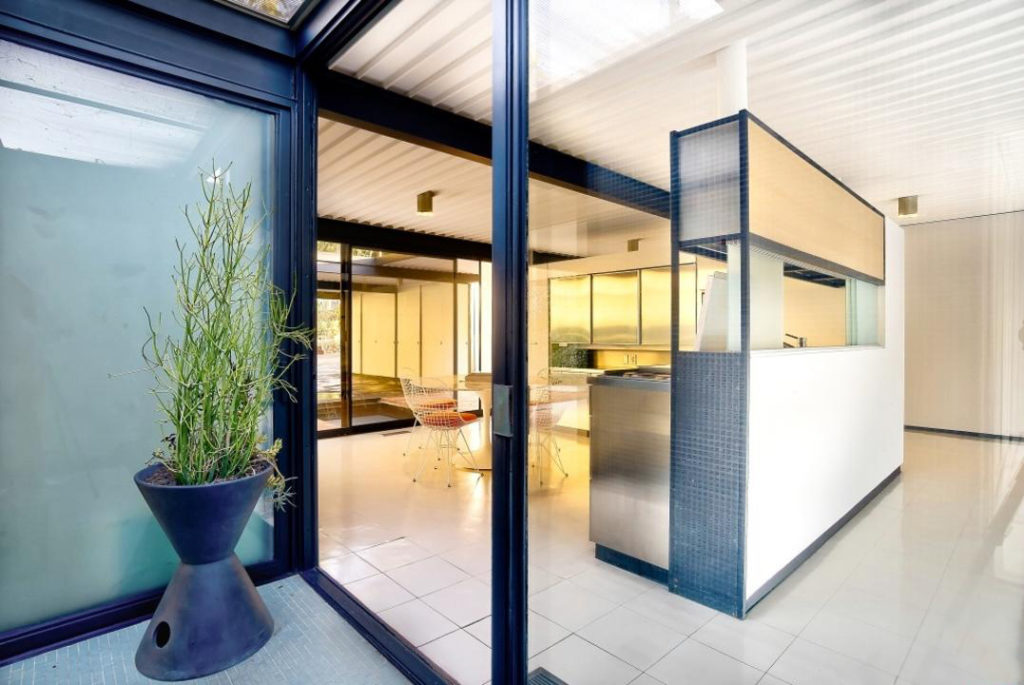
Via Pacific Union LA

The glass and steel-framed modernist home was designed in 1957, as part of Arts & Architecture magazine’s ‘Case Study’ experiments in low-cost building techniques. In recent years the two-bedroom property – l isted for $3.6m with Pacific Union International – has been home to design gallery Seomi International’s exhibitions.
There is 1,280 sq ft of space inside the property, also known as Bailey House, which was restored by Koenig himself in the late 1990s. Glass walls look out onto the surrounding trees and cacti of Laurel Canyon, while inside minimal interiors offer a blank canvas for future owners to put their stamp on.

Read next: The 7 best websites for modernist real estate
- 1 In West Vancouver, a mountainside treehouse home asks for $2.4m
- 2 Near San Diego, a striking home by a Frank Lloyd Wright protege asks for $7m
- 3 Eva Jospin creates a magical portal in Venice
- 4 These bespoke barn homes redefine country living in Rutland
- 5 Nilufar Gallery delves into the annals of design history
- 6 A new hotel anchors itself to the Belgian coast
- 7 A custom ‘yurt’ in Upstate New York asks for $1.15m
- 8 Alcova opens the doors to two historic residences for Milan Design Week
Previous More
Share this story
Related stories.

This West Country farmhouse comes with two converted barns and a seaside lifestyle

News , Property
Near San Diego, a striking home by a Frank Lloyd Wright protege asks for $7m

In West Vancouver, a mountainside treehouse home asks for $2.4m

Rome’s Baroque masterpiece Palazzo Rondinini comes to market
Want news delivered to your inbox.
- Hispanoamérica
- Work at ArchDaily
- Terms of Use
- Privacy Policy
- Cookie Policy
How Did Materials Shape the Case Study Houses?

- Written by Lilly Cao
- Published on May 20, 2021
The Case Study Houses (1945-1966), sponsored by the Arts & Architecture Magazine and immortalized by Julius Shulman ’s iconic black-and-white photographs, may be some of the most famous examples of modern American architecture in history. Designed to address the postwar housing crisis with quick construction and inexpensive materials, while simultaneously embracing the tenets of modernist design and advanced contemporary technology, the Case Study Houses were molded by their central focus on materials and structural design. While each of the homes were designed by different architects for a range of clients, these shared aims unified the many case study homes around several core aesthetic and structural strategies: open plans, simple volumes, panoramic windows, steel frames, and more. Although some of the Case Study Houses’ materials and strategies would become outdated in the following decades, these unique products and features would come to define a historic era of architectural design in the United States.

Among the most important unifying aesthetic strategies of the Case Study projects was a modernist focus on exposed structure and functional design. The Eames House (Case Study House 8), designed by prominent industrial design couple Charles and Ray Eames, was intended to express man’s life in the modern world using “straightforward, unselfconscious” design. Thus, the designers made no attempt to conceal or disguise the structural functions of the steel: it acted as interlocking decking and open-webbed joists on the roof, sashing for windows and doorways, exterior wall siding, and H-beams securing the home’s rectangular frame. The most that these components were altered was with an unobtrusive coating of paint: the façade’s steel beams were originally painted a “warm grey” that over time became glossy black, while the Ferrobord steel roof decking system was painted white on its underside with open-web joists left exposed and alternately painted white, black, and yellow. These paint treatments, rather than obscuring the structural performance of these steel pieces, only served to highlight and integrate them within the building’s larger design scheme of colorful paints and panels.

Two of the other most famous Case Study Houses , the Bailey House (Case Study House 21) and the Stahl House (Case Study House 22), were designed by Pierre Koenig and similarly embraced what were then advanced steel construction strategies. Koenig had had previous hands-on experience with steel construction: while still enrolled as an architecture student at the University of Southern California, he designed and built his first steel-framed house for himself and his family. For the Bailey House, he used four prefabricated steel bents to compose the home’s steel framing system and another three half-span bents for the covered carport. Designed according to an L-shaped plan with a solid rectangular core that housed utilities, the volume was a simple rectangular box with visual emphasis placed on the steel structural skeleton. In the core, the sandwiched steel decking walls concealed insulation wiring and pipes, while the perimeter language of the home alternated between sliding glass doors and opaque steel walls. Koenig’s Stahl House , which was built several years later, similarly embraced a simple L-shaped rectangular volume with alternating steel beams and panoramic glass windows.

Aesthetically functioning hand-in-hand with the stripped steel frame, glass windows are therefore another essential component of many of the Case Study Houses . Three sides of the Stahl House were made with plate glass, the largest available size at the time, allowing for panoramic views from the site’s elevated Los Angeles hillside. Similarly, the Eames House variously utilized clear polished plate glass, factrolite textured glass, wire-embedded safety glass, and translucent corrugated glass, which helped cast planes, shadows, and beams of light through the steel frame and colored façade panels. Using the factrolite glass for privacy and the wire-embedded glass for utilitarian uses and safety, the Eames couple made glass an essential part of the house’s aesthetic and functional design.

This material illuminated another one of the Case Study House’s most essential aesthetic strategies: facilitating a connection with nature by merging and reflecting interior and exterior. Each of the homes utilized an open plan and glass façade explicitly open to their natural surroundings, with some—including the Eames House, Bailey House, Stahl House, and Case Study House 28—incorporating an artificial courtyard, pool, or pond as well. In the Eames House, which included a rectangular residential building and separate studio building connected linearly by an intermediate courtyard, the doors, curtains, and windows could be opened to unify the site into a single long open-air span. In the Bailey House, which incorporated a small shallow pond along the perimeter, the pond mirrored the reflectiveness of the panoramic windows and made the structure appear as if it was floating. Moreover, while the interior core of the house—including bathrooms and utility areas—was largely concealed by opaque steel walls, the roof was pierced to allow access to exterior elements in even these private spaces. Finally, melting the barriers between interior and exterior through the extensive use of glass, Case Study House 28 incorporated a total of 4500 square feet of glass windows shaded by large overhangs.

This connection to nature was facilitated by other material strategies as well. In Koenig’s Bailey House, the pond water was actually circulated up through the gutters and roof scuppers, rendering it an early experiment with environmental control systems. In the Eames House, a long tallowwood wall (tallowwood being the hard, durable wood of eucalyptus trees) was installed parallel to the line of eucalyptus trees gracing the front of the façade. These experiments in incorporation and reflection tempered the efficiency and functionalism of high modernist design with a correlative attention to nature.

Another important part of the Case Study House experiment was their use of new postwar materials and technologies. The Eames House, for example, used the Celotex Corporation’s Cemesto , a pioneering, pre-engineered construction panel that was touted at the time for its low maintenance and ease of installation. With a structural strength that entirely eliminated the need for intermediate structural support, the Cemesto panel could function simultaneously as an interior and exterior wall surface with no extra insulation, protective coating, or interior wall surfacing. The Eames House also utilized Wall-tex, a form of waterproof protection and wear resistance for interior walls invented in 1931, and plyon, a type of laminated lightweight material for cabinetry facing that was originally used in aircraft during World War II. These products demonstrated the design mission of the Case Study Houses as efficient residences for modern Americans.

Yet despite these many unifying characteristics, each of the Case Study Houses featured important material idiosyncrasies as well. The design motivation for Case Study House 28, for example, was to use the traditional material of facebrick in a structural, modern way. Thus, almost the entirety of the house was constructed with facebrick and glass, meaning it also required almost no maintenance or finishes. The use of brick was highly unusual among the Case Study Houses, most of which, as stated above, predominately used steel, glass, and occasionally wood or concrete. Likewise, the Eames House is perhaps most famous for its colorful paneling, mixing Grey Cemesto panels, off-white, black, blue, and orange/red plaster panels, and gold leaf or photographic panels in special locations around the site. Finally, the Entenza House , which Charles and Ray Eames and Eero Saarinen codesigned, similarly utilized a simplistic and flexible steel frame structure yet chose to conceal this structure with interior wood paneled cladding.

Over time, the flaws in the original material choices were also slowly revealed: many of the case study houses used only single panel glass, which would prove to make passive temperature control difficult and thus poor from a sustainability perspective. Most tellingly, the Stahl House—which may be the most famous of the Case Study Houses--, while remembered fondly by its inhabitants, would also have to suffer important changes to make it more livable: replacing the windows with shatterproof glass, adding a walkway around the cantilevered living room for window washers, and covering the floors with carpet to make them safer for children.

Altogether, the materials of the Case Study Houses played an essential role in their aesthetics, structures, and function. Despite the incredible innovations and advancements that would change architecture dramatically in the years following, these materials would nevertheless define one of the most iconic eras of American modernist architecture. Embracing stripped-back structural aesthetics, a connection to nature, advanced technology and materials, and experimental design, these houses—and their materials—represented the vanguard of modern construction and design.

Image gallery

- Sustainability
想阅读文章的中文版本吗?

加州‘案例研究住宅’中的材料性
You've started following your first account, did you know.
You'll now receive updates based on what you follow! Personalize your stream and start following your favorite authors, offices and users.

- Uncrate . com 0
- shop . Uncrate . com 0
- Uncrate . tv 0

- Android App
- Everyday Carry
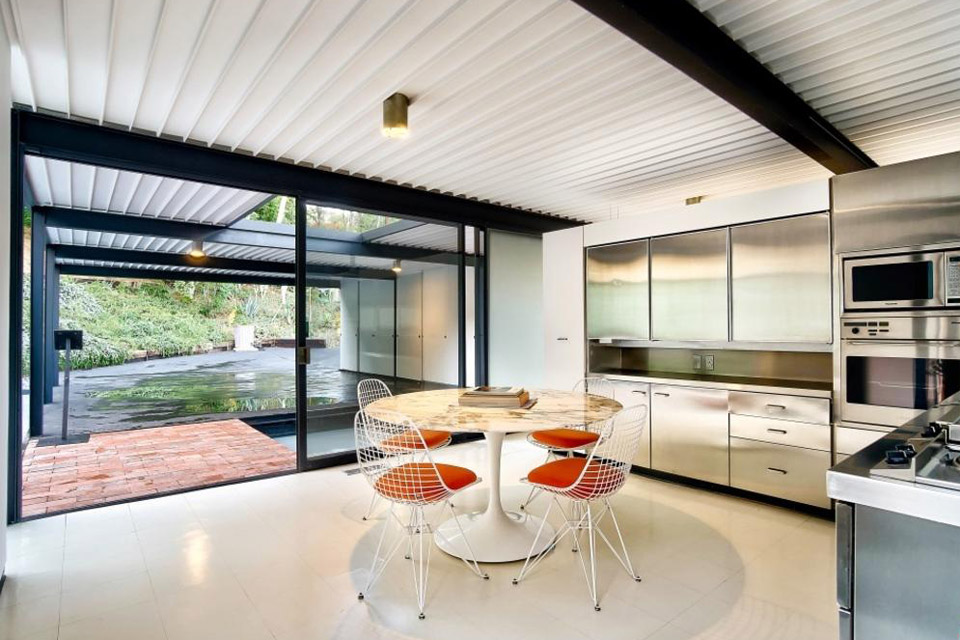
Real Estate
Case study house #21.
Sponsored by Arts & Architecture magazine, the Case Study Houses provided post-WWII America a vision of modern living, as conceived by such luminaries as Charles and Ray Eames, Richard Neutra, and Eero Saarinen. One of just 17 originals not demolished, remodeled beyond recognition, or never built in the first place, Pierre Koenig's Case Study House #21 is an LA-area steel frame masterpiece. Also known as the Bailey House, it measures just 1,280 square feet but keeps a spacious atmosphere with an open floor plan and glazed facade looking out onto a pair of reflective pools. The mid-century stunner received a complete restoration at the hands of Koenig in the 1990s, preserving the home's clean lines and minimalist aesthetic. Because of its innovative design and use of materials, the has reached landmark status after being registered as Los Angeles Historic-Cultural Monument #669.
Photos: Matthew Momberger / Pacific Union International Reality
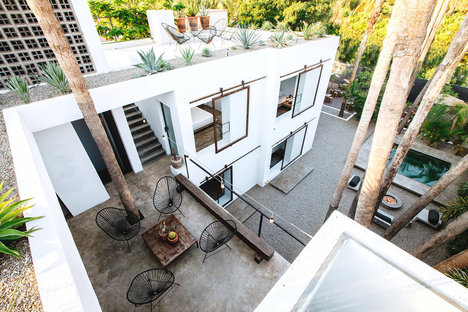
Drift San Jose
Drift San Jose is a laid-back bohemian-meets-modern boutique hotel on the southern end of... $2,600,000.
Read More or Buy From Last Rock
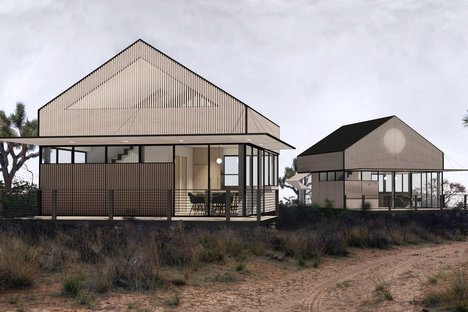
LivingHomes YB1 House
Swiss designer Yves Béhar and the Amazon-funded homebuilder Plant Prefab have teamed up for... $280,000+.
Read More or Buy From Living Homes

Featured Video
Roborock s8 maxv ultra robot vacuum + mop.
With the S8 MaxV Ultra, Roborock ensures every inch of your house is clean. The new model features a Flexi Arm Design with an extendable side brush that reaches into corners, while an Extra Edge Mopping System cleans along edges. A Reactive AI 2.0 Obstacle Recognition uses a 3D structured light and an RGB camera to identify and avoid obstacles in its path, and a PreciSense LiDAR navigation system scans rooms to create a map and determine the most efficient route. It upgrades suction power to 10,000Pa to pick up even more dust and dirt, a Carpet+ Boost System ups the hair pick-up rate by 30%, and the mopping system scrubs floors 4,000 times per second, detecting carpets and rugs along the way. With built-in voice assistance, users can start cleaning with a simple command, and when the job is done, the vacuum will retreat to its dock to automatically empty, wash, dry, and recharge itself. The S8 MaxV Ultra will be available April 22, 2024, and for a limited time, get a triple gift pack valued at $1,000 with your purchase.
Presented by Roborock.
Buy From Roborock

Featured Gear
Golden krust x vita coco drink deal.
Over the past 35 years, Golden Krust has grown from a single restaurant in the Bronx to a Caribbean-owned Goliath with over 120 locations in North America. Now they're partnering with Vita Coco on a special deal to celebrate tropical flavors. Through June 30th, guests can add a Vita Coco drink — Juice or Original — to their order for just $1 with the purchase of one of the chain's signature jerk chicken meals. By pairing the refreshingly sweet coconut drink with savory, spicy, and slow-cooked jerk, it's a great summer treat.
Presented by Vita Coco.
Visit Golden Krust
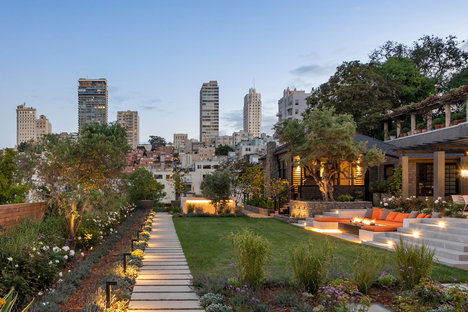
Residence 950
Residence 950 is aiming to be the most expensive house in San Francisco and... $45,000,000.
Read More or Buy From Val Steele
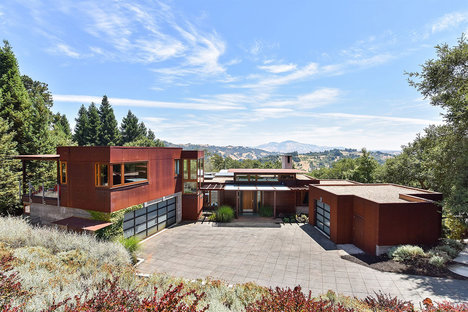
Lafayette Hillside Home
The key features of any great California home are views, outdoor living spaces, and... $4,895,000.
Read More or Buy From Pacific Union
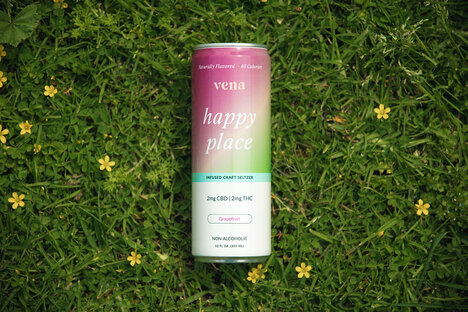
Vena Happy Place THC Drink
Designed to give you a buzz without the drawbacks, Vena Happy Place delivers feel-good vibes without the alcohol. The THC drink is made with 2mg of THC and 2mg CBD, taking you on a journey of relaxation and happiness, minus the hangover that usually follows. Available in Black Cherry, Grapefruit, and Guava Passionfruit, each refreshing sip elevates your mood, and with just 40 calories, you can savor the moment guilt-free.
Presented by Vena.
Buy From Vena
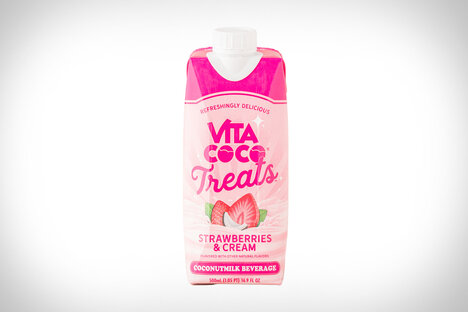
Vita Coco Treats
Vita Coco is introducing Vita Coco Treats, a new coconutmilk beverage crafted for those moments when you're in the mood for something light, sweet, and satisfying. Combining the flavors of creamy coconut and sweet strawberries, Vita Coco Treats offers a refreshingly indulgent drink. In celebration of the launch, Target shoppers can pick up Treats for free by signing up for a full product rebate on the website, while supplies last. Beginning April 15, you can also enter to win a "Treat Yourself" kit, packed with Vita Coco Treats and other popular Target shopper favorites by visiting Vita Coco's Instagram, while supplies last.
Learn More From Vita Coco
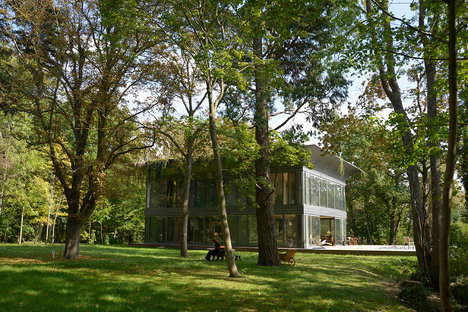
Riko x Starck Prefabricated Accessible Technological Homes
French designer Philippe Starck adds his timeless modern aesthetic to the prefab game with... $450,000+.
Read More or Buy From S+R
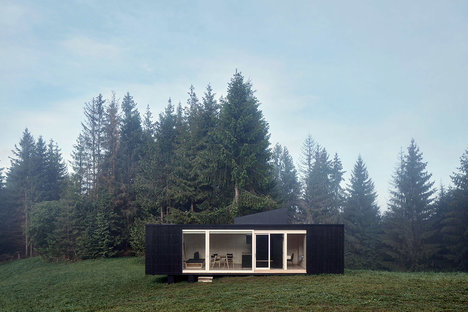
Ark Shelter
An ark is defined as a place of protection, refuge, or asylum and these... $50,000+.
Read More or Buy From Ark
- uncrate.com 0
- Most Wanted
- shop.uncrate.com 0
- New Arrivals
- Best Sellers
- Featured Brands
- Sale & Surplus
- uncrate.tv 0
- Latest Videos
- Popular Videos
- Video Channels
Get Uncrate Delivered To Your Inbox & Receive 15% Off Your Next Uncrate Supply Order. Some exclusions apply.
Free shipping over $200 in the U.S. International rates at checkout. We're proud to offer a discount to Military, Nurses, and First Responders.
You are using an outdated browser. Please upgrade your browser to improve your experience and security.

Pierre Koenig’s Case Study House #21 for sale for almost €3 Million
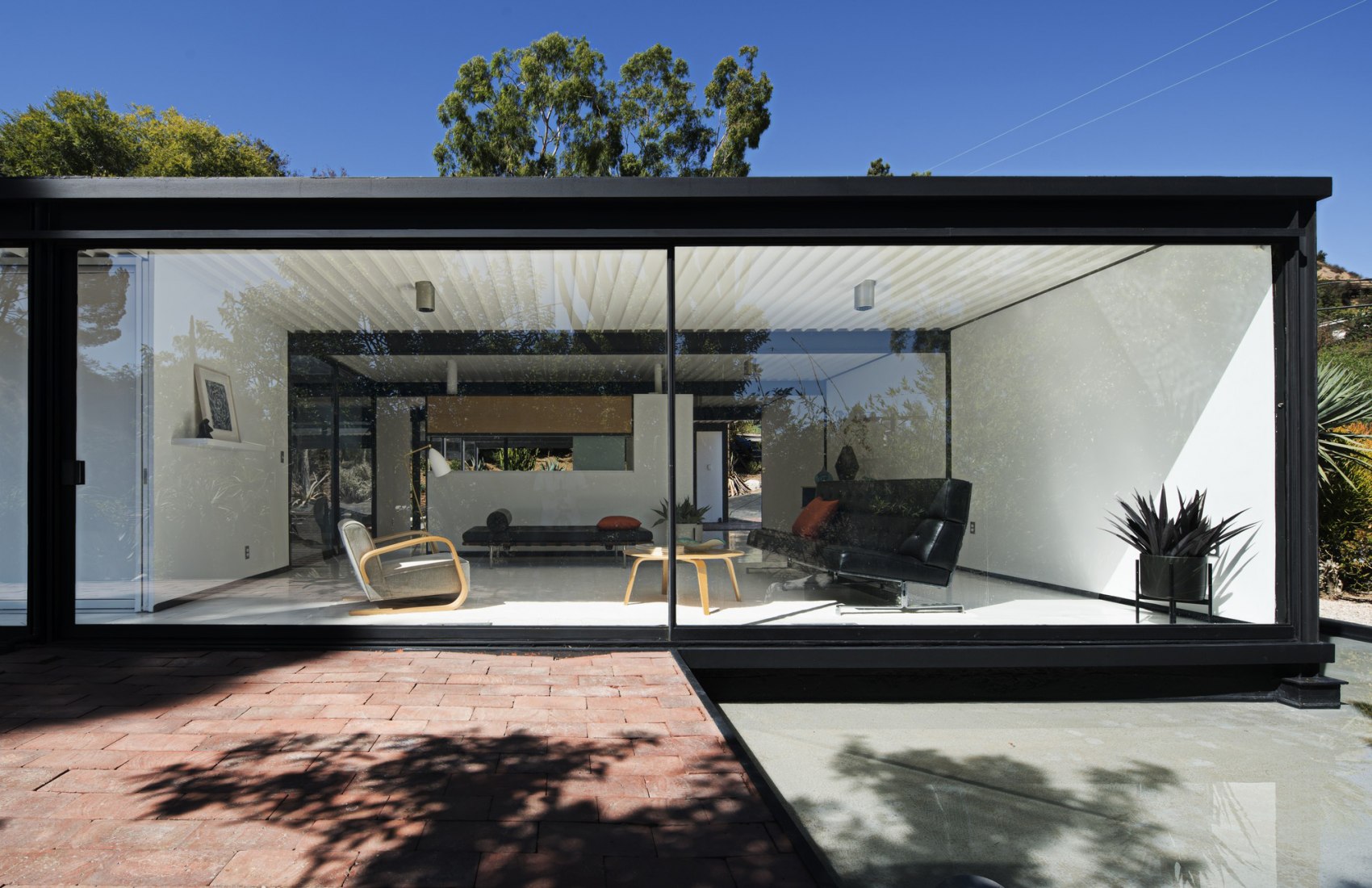
Metalocus recommends
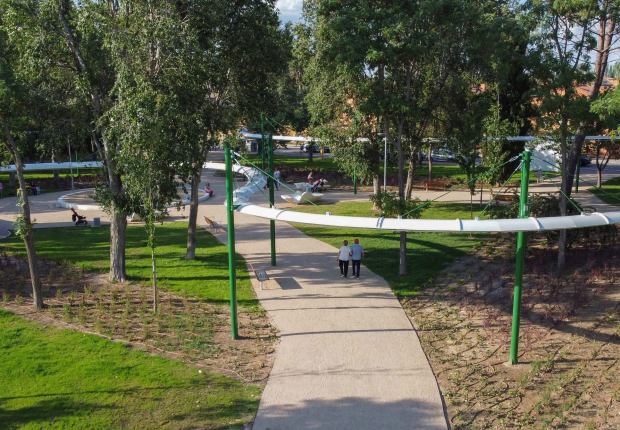
Recovering identity and exalting biodiversity. Andalucía Park by Adoras Atelier
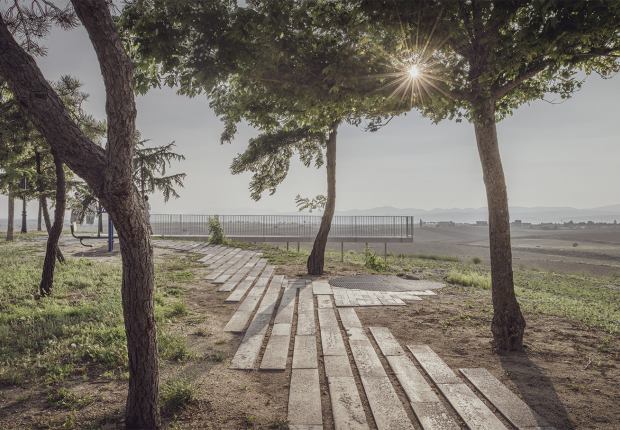
A natural and sensory tour. Carve, Reuse, Break by JJ+
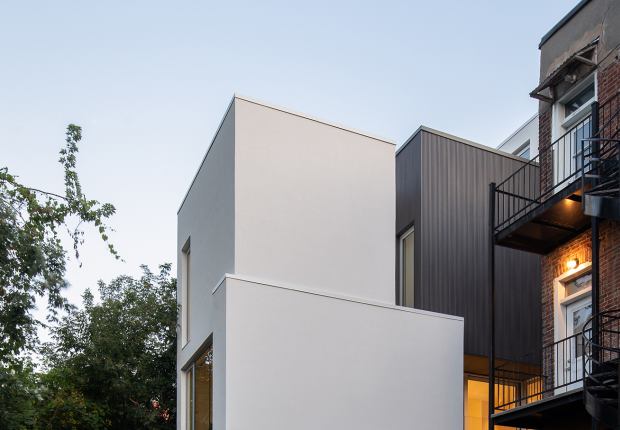
Dialogue with the city's history. Sir Georges by Maurice Martel
More information.
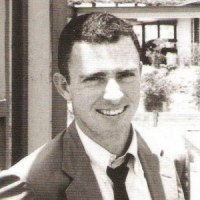
Knud Lonberg-Holm: The invisible architect
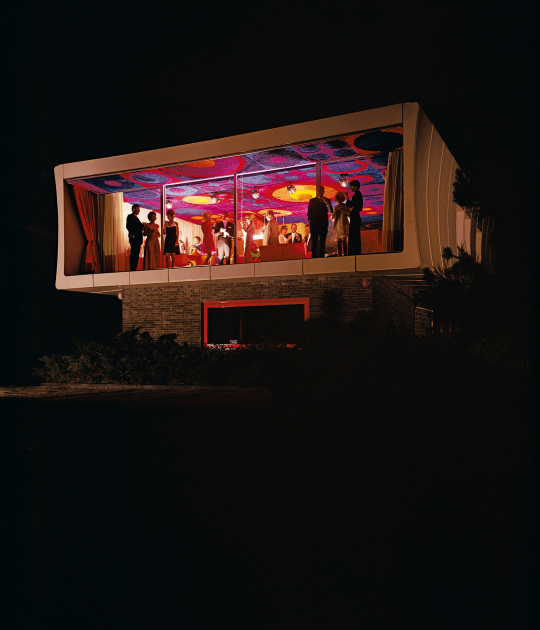
Prefab Houses. The amazing story of the prefabricated house
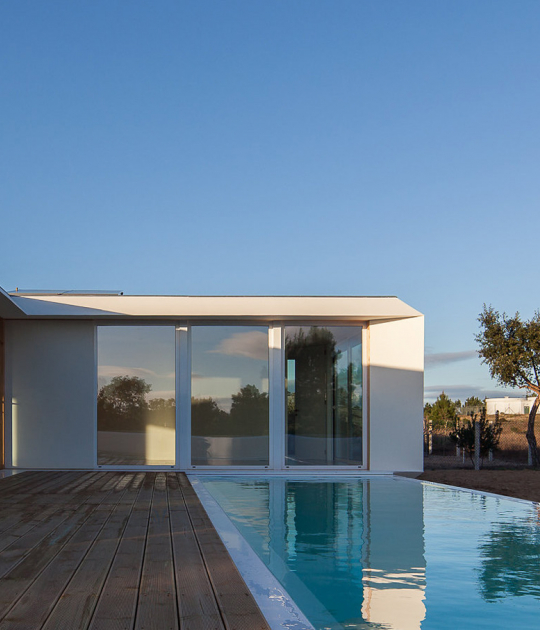
Prefabricated housing system by MIMA
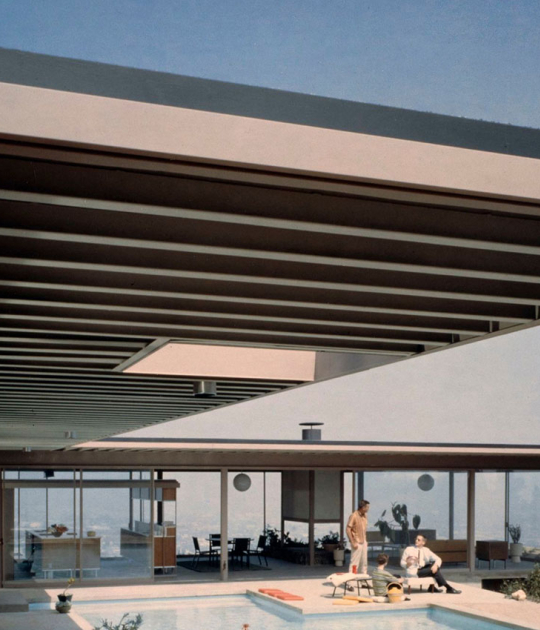
Julius Shulman. Modernism rediscovered
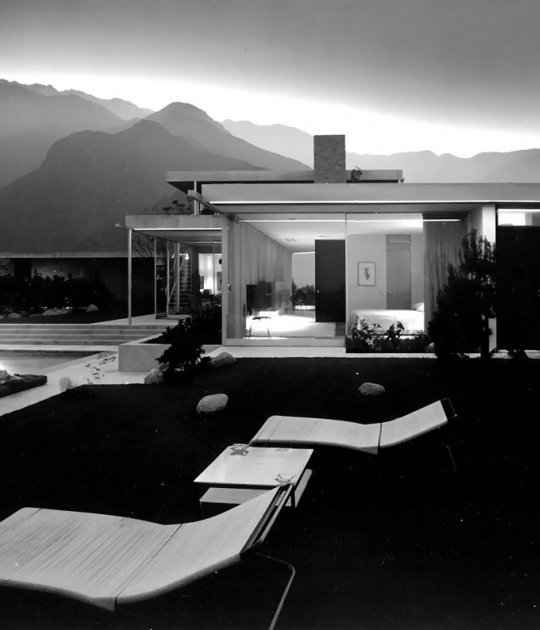
"VISUAL ACOUSTICS". The Modernism of Julius Shulman
Dr. and Mrs. Stuart Bailey House (Case Study House #20)
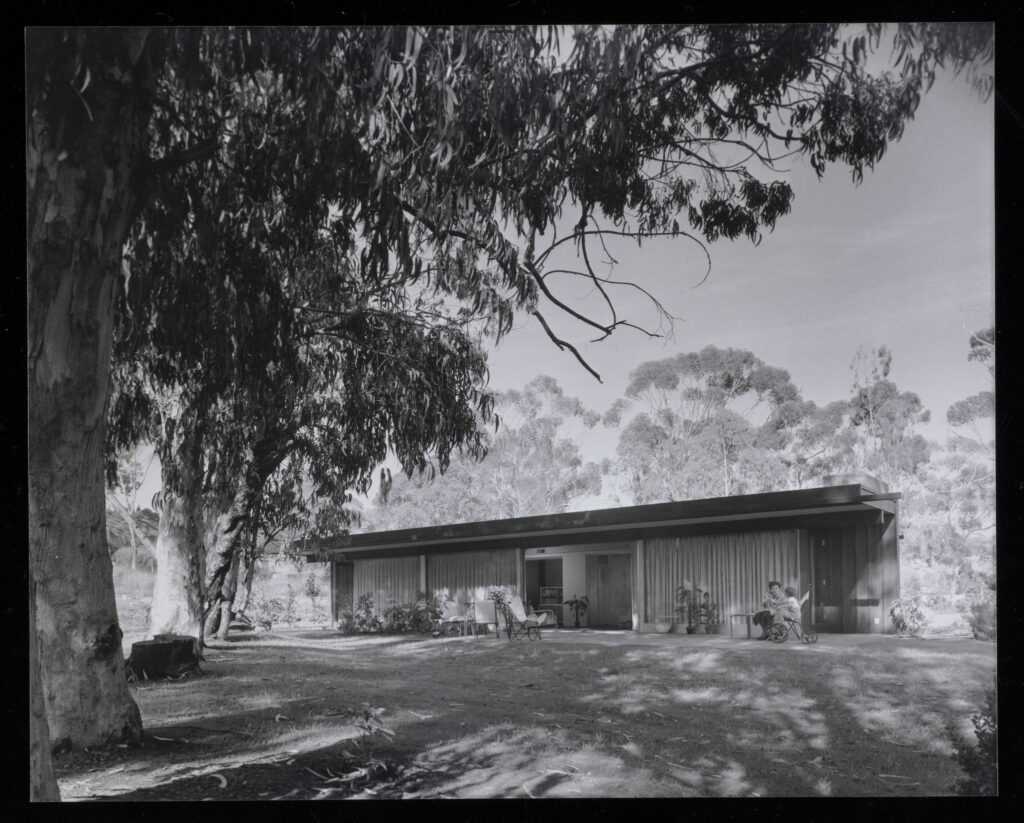
This home is located on a five-acre tract purchased for the purpose of building case study houses by John Entenza, the editor of Arts & Architecture magazine. The site, which overlooks the Pacific, also hosted three other case study houses, including Charles and Ray Eames’ house of 1949. Entenza sold one lot to Stuart Bailey, a 30-year-old dentist, who turned to Richard Neutra to design his home on the recommendation of a friend. As part of the Case Study House program, Bailey was eligible for discounts on building and furnishing materials from manufacturers including furniture, steel doors, and a prefabricated utility core called the Ingersoll unit. 51 years later, Bailey praised the continued durability of this unit, which located his plumbing and heating equipment at a central location. Neutra’s design for the house realized several ideas that he had been experimenting with for years, including his notion of a “Four-Courter House.” The resulting space had four articulated wings that extended out into the landscape. While this approach recalls the designs for the Kaufmann house, built a year earlier, and the Tremaine house, built a year later, this house was on a more modest scale of 1,320 square feet, and the wings are much shorter in length. Outside, the “four courts” that are dedicated to socializing, play, dining, and work double the house’s living spaces. Bailey’s correspondence with Neutra demonstrates his interest in the lighting of the house, and he campaigned for “cove lights, trough lights, klieg lights, clerestories, lights in closets and cupboards, and all manner of decorative lights,” no matter the cost. But when Bailey called for the closets to be painted white to make their interiors more visible, Neutra refused, arguing that “the closest must recede” through the use of dark paint and threatening to “remove [his] name from the project” should they be painted white. Ultimately, Neutra continued to work on perfecting the house for many years after its completion, designing two 700 square foot additions for the family in 1950 and 1958.
Adapted from Neutra – Complete Works by Barbara Lamprecht (Taschen, 2000), p. 193.
Project Detail
Project architect.
Richard Neutra
Dr. and Mrs. Stuart Bailey
Pacific Palisades, CA
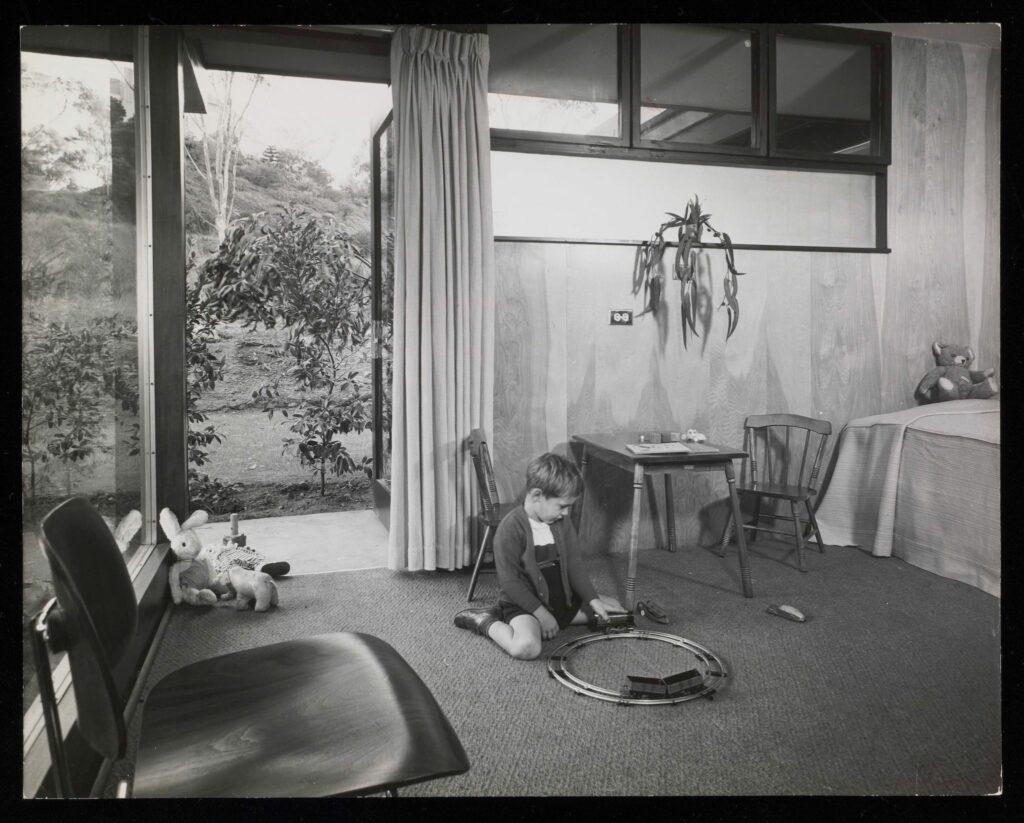
Signup for our email newsletter
Nationally recognized historic home to be bequeathed to La Jolla Historical Society
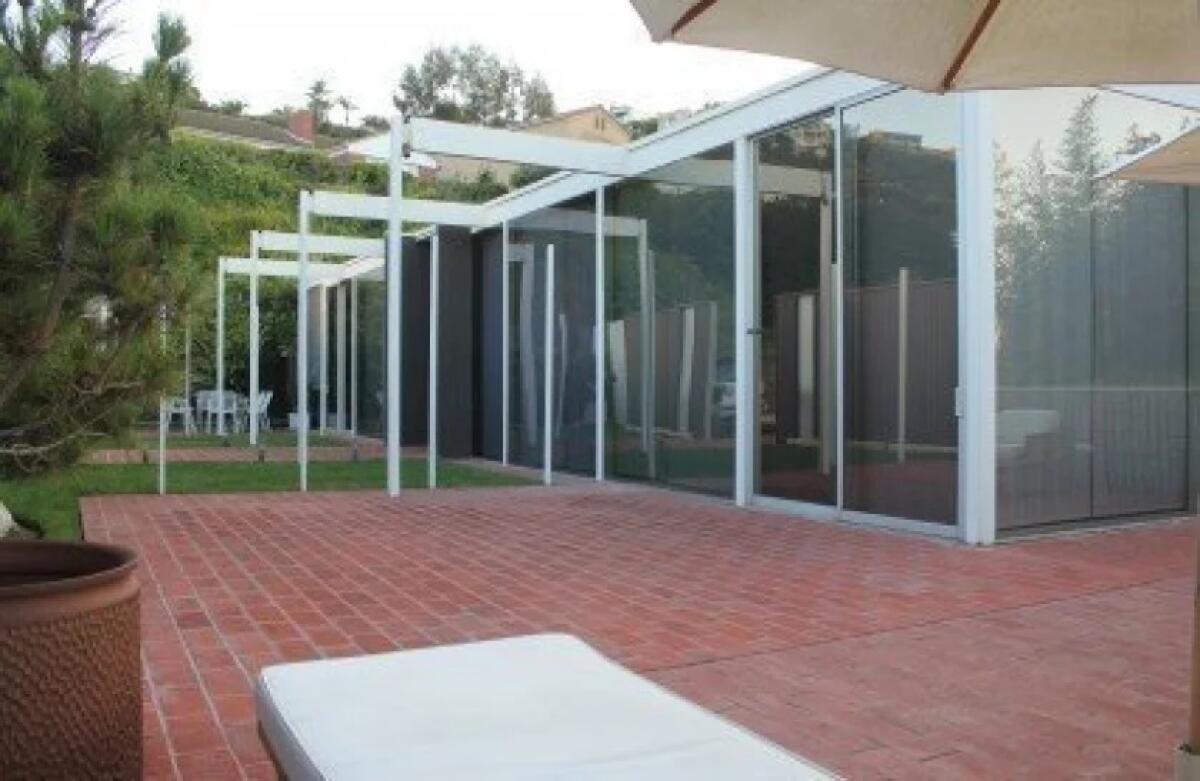
- Show more sharing options
- Copy Link URL Copied!
A house in La Jolla’s Hidden Valley neighborhood described as “the most important single-family home in the La Jolla community” will one day become the property of the La Jolla Historical Society.
In a celebration Sept. 18 to welcome new Historical Society Executive Director Lauren Lockhart and bid farewell to her predecessor, Heath Fox , the announcement was made that upon the deaths of the current homeowners, Nancy, Joseph and Pamela Manno, Case Study House 23C will be gifted to the Historical Society.
“Of all the announcements I’ve made as executive director, this is the last and by far the most important,” Fox told the gathering.
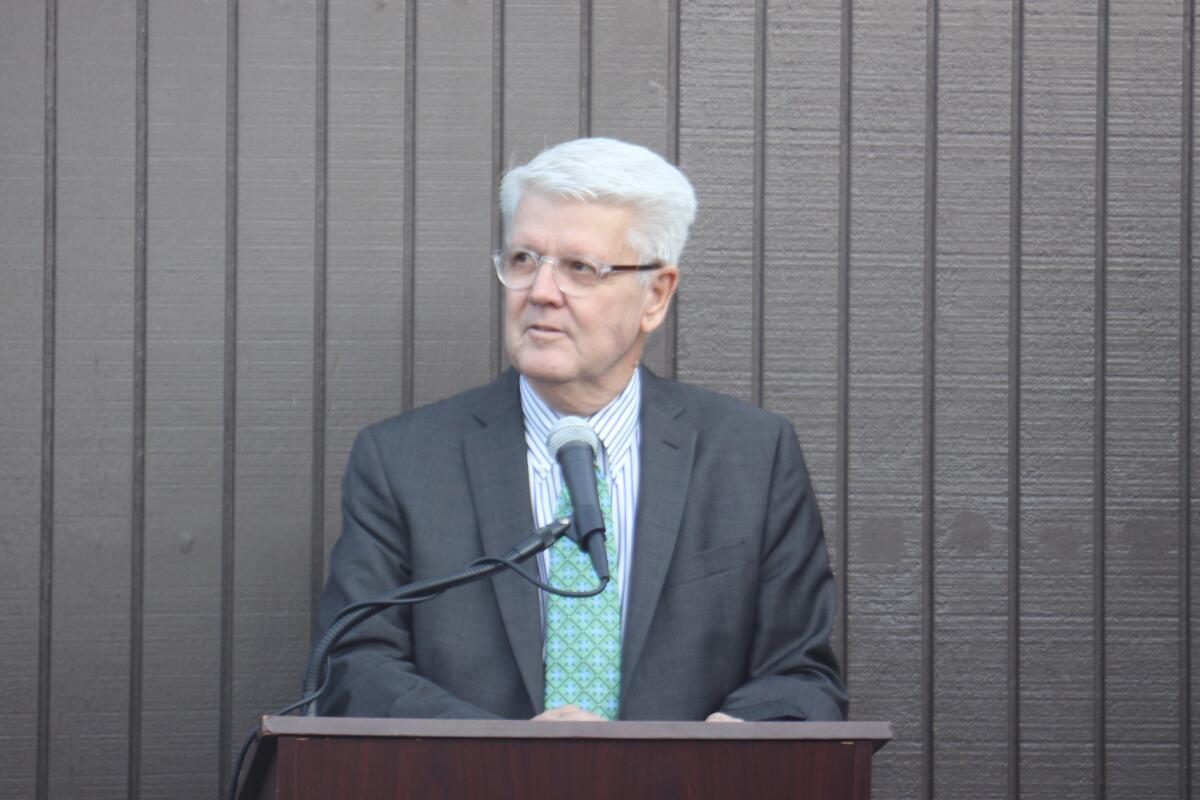
The house, at 2339 Rue de Anne, is listed on the National Register of Historic Places , one of only four houses in La Jolla with such designation.
Fox later told the La Jolla Light that the Historical Society currently does not possess any properties besides its gallery and office location, known as Wisteria Cottage. The hope is to use Case Study House 23C as “an educational and cultural resource for the community of La Jolla, the people of San Diego, the state of California and indeed the nation that has honored it on the National Register of Historic Places,” Fox said. Plans for how that will be done haven’t yet been decided.
“We hope it will be a long time [before we own the house], and we will use that time to do due diligence and look at best practices and the other models of what people have established to make the resource available to the community and to people who are in architecture and design and want to visit and learn from the house,” Fox said.
The Manno family has lived in the house since Nancy and Joseph bought it in 1974.

Speaking for the family, daughter-in-law Pamela said: “Case Study House 23C is a quiet masterpiece. It exemplifies the harmonious relationship between art, architecture and nature. It is a peaceful place that invokes mindful thought, creativity and well-being for our family. We consider ourselves to be stewards of the house and are confident the La Jolla Historical Society is committed to continuing the stewardship. We believe bequeathing Case Study House 23C to the La Jolla Historical Society will ensue the preservation of this special place while educating communities on the significance of historical architecture and art preservation.”
Support Local Journalism
At a time when local news is more important then ever, support from our readers is essential. If you are able to, please become a supporter of the La Jolla Light today by clicking here.
The Case Study House program, which ran from 1945 to 1966, was established by John Entenza, editor and publisher of Los Angeles-based Arts & Architecture magazine. Through the program, major architects of the day were commissioned to design prototype single-family homes in the modern style to test new ideas and concepts of plan, form and materials, Fox said.
“The goal was to represent models that could quickly and efficiently be used in residential development to address the postwar housing shortage,” Fox said. “The program became immensely influential in architectural design, and that is true right down to the present day.”
Through the program, 36 buildings were designed. Among them, 24 houses and one apartment building were constructed, mostly in the Los Angeles area.

The only project in San Diego County consisted of the three houses that make up Case Study House 23 — 23A, 23B and 23C, dubbed “The Triad.” The houses are next to one another on Rue de Anne. House 23C was listed on the National Register of Historic Places in 2013 . House 23A is considered eligible for the National Register. House 23B has been renovated to the point that it is no longer eligible.
“The essence and spirit of the whole historic preservation movement was in the hearts of Nancy and Joseph long before this house was listed on the National Register,” Fox said. “And this is the Manno family legacy, one of invested, thoughtful and committed stewardship. Although we hope it is many years away, when the day comes that ownership of Case Study House 23C passes to the La Jolla Historical Society, the Manno family legacy of stewardship will come with it. This is a responsibility I know the La Jolla Historical Society will embrace with enthusiasm, professionalism and dedication. To Nancy, Joseph and Pamela for your faith, trust [and] confidence in our organization as the inheritors of your legacy, we are humbly and sincerely grateful.” ◆
Get the La Jolla Light weekly in your inbox
News, features and sports about La Jolla, every Thursday for free
You may occasionally receive promotional content from the La Jolla Light.

Become a press patron
Support local journalism.
At a time when local news is more important than ever, support from our readers is essential. If you are able to, please support the La Jolla Light today.
More from this Author

Real Estate
La Jolla Shores committee gives OK to two home projects, asks a third to return
April 22, 2024
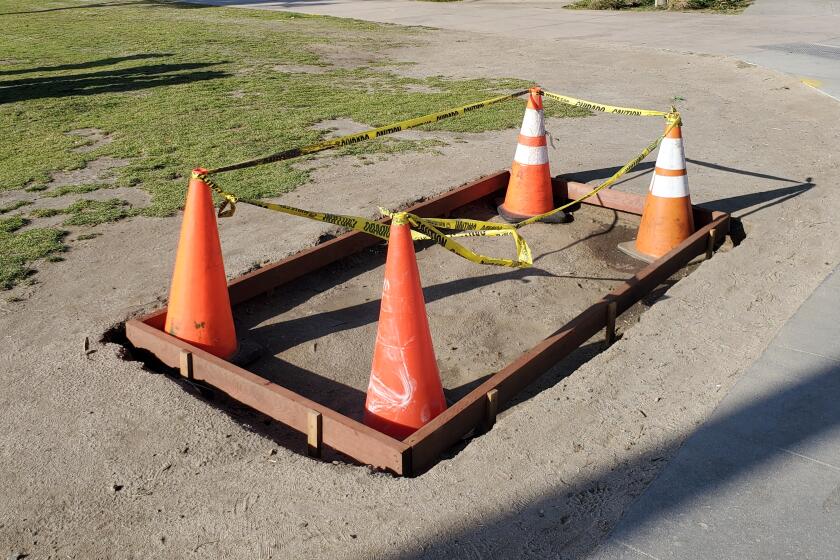
Artist’s petition aims for repeal of ‘expressive activity’ zones in local parks
April 21, 2024

Health & Science
Revived UCSD center to study ocean and human health
April 20, 2024
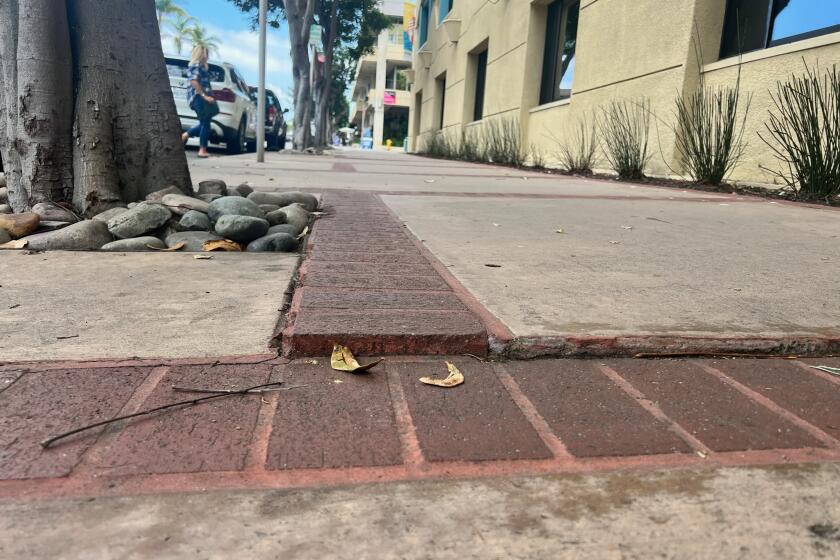
Enhance La Jolla deemed not responsible in trip-and-fall lawsuit
April 19, 2024
What caused Dubai floods? Experts cite climate change, not cloud seeding
- Medium Text
DID CLOUD SEEDING CAUSE THE STORM?

CAN'T CREATE CLOUDS FROM NOTHING
Coming soon: Get the latest news and expert analysis about the state of the global economy with Reuters Econ World. Sign up here.
Reporting by Alexander Cornwell; editing by Maha El Dahan and Alexandra Hudson
Our Standards: The Thomson Reuters Trust Principles. New Tab , opens new tab

World Chevron

Israel's Gaza war has negatively impacted human rights, says US report
The war between Israel and Hamas that has killed tens of thousands of Palestinians in Gaza and resulted in a severe humanitarian crisis has had "a significant negative impact" on the human rights situation in the country, the U.S. State Department said in its annual report on Monday.


IMAGES
VIDEO
COMMENTS
Published on October 30, 2015. Share. Pierre Koenig 's Case Study House 21 (Bailey House) represents an icon in the Case Study program, the visionary project for reimagining modern living ...
Built in 1958, Case Study House 21 underwent a restoration by Koenig to his original intent and design in 1998, including the addition of updated appliances and cabinetry. The house was last sold ...
November 9, 1999. The Bailey House, or Case Study House #21, is a steel-framed modernist house in the Hollywood Hills, designed by Pierre Koenig. It was registered as Los Angeles Historic-Cultural Monument #669, with the endorsement of then-owner Michael LaFetra, the Los Angeles Conservancy, and Pierre and Gloria Koenig.
The Bailey House or Case Study House #21 was registered as a Los Angeles Historic-Cultural Monument #669, with the endorsement of then owner Michael LaFetra, the Los Angeles Conservancy and Pierre and Gloria Koenig. ... The main house is a 30' x 44' rectangular plan with a solid rectangular core housing the utilities - two full bathrooms and a ...
Bailey House, made for the psychologist Walter Bailey and his wife Mary in Los Angeles 1956-1958, also known as the Case Study House No. 21, is an outstanding work of the architect Pierre Koenig (1925-2004), a tireless fighter who never gave up the idea of finding projects that represent the technology and lifestyles of the California company ...
January 11, 2012. Within the Case Study House Program, the #21 represents an experiment that the architect Pierre Koenig conceived following -and sometimes inventing- the principles of the mid-century modern architecture like the on-site assembling of prefabricated elements. The Case Study House #21 is located in a Hollywood Hills canyon and ...
Bailey House (Case Study House #21) ... and Koenig was able to realize his vision of an open-plan design that was both affordable and beautiful. Completed in 1959, the Bailey House was envisioned as a prototype for modern housing that could be produced on a large scale, perfectly in keeping with the goals of Arts + Architecture magazine's ...
Case Study House No. 21, photographed in 2006. Built between 1956 and 1958, Case Study House No. 21, also known as the Bailey House, features walls of glass, reflecting pools, and sliding doors ...
Los Angeles landmark and modernist icon Case Study House #21, dubbed Bailey House, is for sale. Tucked into the Hollywood Hills, the steel-framed, midcentury-modern home was designed in 1958 by Pierre Koenig as part of Arts & Architecture magazine's Case Study Program, which commissioned modern, reproducible housing that postwar, middle-class Americans could afford.
Save. Check on Architonic. Image 1 of 21 from gallery of Pierre Koenig's Historic Case Study House #21 Could Be Yours... for the Right Price. Photograph by Grant Mudford.
This one is the Bailey House, or Case Study House #21 ( PDF ), located at 9038 Wonderland Park Ave in the Hollywood Hills, and is said to be architect Pierre Koenig's "greatest steel frame design ...
The Case Study House Program drew up 36 sets of plans for low-cost, modernist houses from some of the greatest midcentury architects. Some were never built, oth Go to the content Go to the footer
Narrative Description. Case Study House #21 was Koenig's first Case Study house and an experiment in on-site assembly of a steel frame dwelling. The use of steel allowed the architect to open up the floor plan and take advantage of wide expanses of floor to ceiling plate glass.
Conclusion: Case Study House 21's floor plan showcases the ingenuity and vision of Pierre Koenig. Its thoughtful layout, characterized by open spaces, fluid transitions, and seamless integration with nature, exemplifies the principles of modernism in architecture. This iconic house remains a timeless example of how design can elevate the living ...
Case Study House #21 in Los Angeles—designed by Pierre Koenig —is now available at a discounted price. The showstopping home went on the market two years ago for $4.5 million, but didn't ...
The glass and steel-framed modernist home was designed in 1957, as part of Arts & Architecture magazine's 'Case Study' experiments in low-cost building techniques. In recent years the two-bedroom property - listed for $3.6m with Pacific Union International - has been home to design gallery Seomi International's exhibitions.. There is 1,280 sq ft of space inside the property, also ...
The Case Study House Program served as a model for post-war living, providing the public and the building industry an opportunity to access affordable, mid-century modernism and simple designs ...
The design motivation for Case Study House 28, for example, was to use the traditional material of facebrick in a structural, modern way. Thus, almost the entirety of the house was constructed ...
Case Study House #21 Sponsored by Arts & Architecture magazine, the Case Study Houses provided post-WWII America a vision of modern living, as conceived by such luminaries as Charles and Ray Eames, Richard Neutra, and Eero Saarinen. One of just 17 originals not demolished, remodeled beyond recognition, or never built in the first place, Pierre Koenig's Case Study House #21 is an LA-area steel ...
One of the most famous houses in Los Angeles, and acknowledged world-wide as a seminal modernist single home design, Case Study House #21 is arguably Pierre Koenig 's greatest steel frame design, and the high point of the Case Study Program promoted by Arts & Architecture Magazine from 1945 to 1964. The house was one of the few Case Study houses that was a true prototype in terms of ground ...
Case Study House 21 stands as a testament to the innovative spirit of modern architecture, particularly the Case Study House Program initiated by Arts & Architecture Magazine in the 1950s. Designed by Pierre Koenig, this iconic abode boasts a captivating floor plan that exemplifies the principles of open space, seamless indoor-outdoor living, and a strong connection to nature.… Read More »
As part of the Case Study House program, Bailey was eligible for discounts on building and furnishing materials from manufacturers including furniture, steel doors, and a prefabricated utility core called the Ingersoll unit. 51 years later, Bailey praised the continued durability of this unit, which located his plumbing and heating equipment at ...
The Case Study House program, which ran from 1945 to 1966, was established by John Entenza, editor and publisher of Los Angeles-based Arts & Architecture magazine. Through the program, major architects of the day were commissioned to design prototype single-family homes in the modern style to test new ideas and concepts of plan, form and materials, Fox said.
April 17, 20249:07 AM PDTUpdated 28 min ago. [1/5]People walk through flood water caused by heavy rains, in Dubai, United Arab Emirates, April 17, 2024. REUTERS/Amr Alfiky Purchase Licensing ...